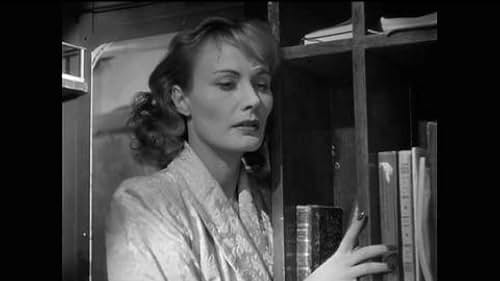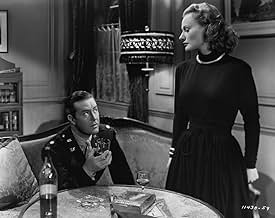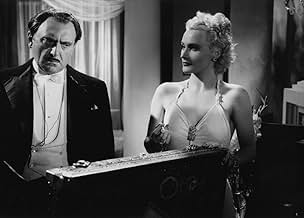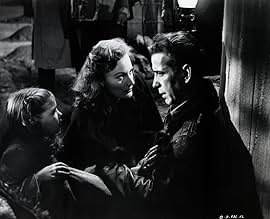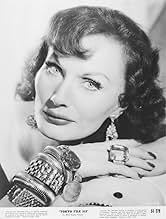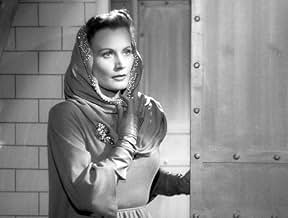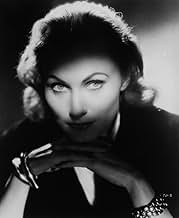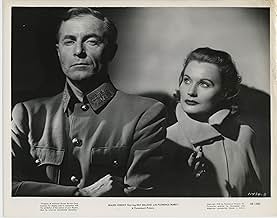Florence Marly(1919-1978)
- Actress
- Writer
- Composer
Highly alluring Czech-born actress Florence Marly, born on June 2, 1919, initially expressed intentions of being an opera singer. At the age of 18, however, she was discovered by the 33-year-old renowned French director Pierre Chenal while a student of art and literature at the Sorbonne. Chenal put her immediately into his film The Alibi (1937) and an acting career was ignited instead.
Chenal and his protégé married the following year and Florence continued to figure into many of his films including The Lafarge Case (1938), Sirocco (1938), and The Last Turning (1939). Managing to flee Paris prior to the Nazi occupation, the couple arrived in Argentina in 1944 and stayed there for several years where she appeared in a few films -- La piel de Zapa (1943), El fin de la noche (1944) and, for her husband, Viaje sin regreso (1946). Returning to France in the post-war years, she was nominated for a Cannes Film Festival award for her performance in The Damned (1947) [The Damned] directed by René Clément and also starring Marcel Dalio and Henri Vidal.
Exotic foreign imports were popular in Hollywood in post-war years and in 1949, sultry-eyed Florence took a chance on Hollywood when she was signed by Paramount. When not appearing in the typical intrigue and espionage movies expected of her opposite such stars as Ray Milland in Sealed Verdict (1948) and Humphrey Bogart in Tokyo Joe (1949), she entertained American troops in Korea and took time to appear in a homeland movie Krakatit (1948). During this period she also received top billing in the US/Japan co-production Tokyo File 212 (1951) and was featured in the minor comedy Gobs and Gals (1952) which showcased pantomime American comedians George Bernard and Bert Bernard [aka The Bernard Brothers].
Florence's American career was cut short when she was branded a Communist and blacklisted. Leaving America for a time, she was eventually cleared after it was discovered that her name had been confused with the Russian club singer Anna Marly who was on the "subversive" list. The damage had already been done, however, and her film career never recovered.
Appearing in her husband's films El ídolo (1952) [The Idol] and Confesiones al amanecer (1954) [Confessions at Dawn], their marriage, which was marked by long separations, crumbled and she and Chenal divorced in 1955. Florence married an Austrian count the following year, but that marriage too would not survive. With her film career practically finished (one of her last during this period of upheaval was the "C" grade movie Undersea Girl (1957) with Mara Corday), she turned to TV and worked occasionally for the next decade or so on such popular shows as "The Millionaire", "Dragnet", "77 Sunset Strip", "The Man from U.N.C.L.E" and "Love, American Style". She also returned to a small spate of low grade films including Queen of Blood (1966), Doctor Death: Seeker of Souls (1973), The Astrologer (1976) and the movie short Space Boy (1973), in which she also served as writer and composer.
Florence died suddenly in the Los Angeles area at age 59 of a heart attack.
Chenal and his protégé married the following year and Florence continued to figure into many of his films including The Lafarge Case (1938), Sirocco (1938), and The Last Turning (1939). Managing to flee Paris prior to the Nazi occupation, the couple arrived in Argentina in 1944 and stayed there for several years where she appeared in a few films -- La piel de Zapa (1943), El fin de la noche (1944) and, for her husband, Viaje sin regreso (1946). Returning to France in the post-war years, she was nominated for a Cannes Film Festival award for her performance in The Damned (1947) [The Damned] directed by René Clément and also starring Marcel Dalio and Henri Vidal.
Exotic foreign imports were popular in Hollywood in post-war years and in 1949, sultry-eyed Florence took a chance on Hollywood when she was signed by Paramount. When not appearing in the typical intrigue and espionage movies expected of her opposite such stars as Ray Milland in Sealed Verdict (1948) and Humphrey Bogart in Tokyo Joe (1949), she entertained American troops in Korea and took time to appear in a homeland movie Krakatit (1948). During this period she also received top billing in the US/Japan co-production Tokyo File 212 (1951) and was featured in the minor comedy Gobs and Gals (1952) which showcased pantomime American comedians George Bernard and Bert Bernard [aka The Bernard Brothers].
Florence's American career was cut short when she was branded a Communist and blacklisted. Leaving America for a time, she was eventually cleared after it was discovered that her name had been confused with the Russian club singer Anna Marly who was on the "subversive" list. The damage had already been done, however, and her film career never recovered.
Appearing in her husband's films El ídolo (1952) [The Idol] and Confesiones al amanecer (1954) [Confessions at Dawn], their marriage, which was marked by long separations, crumbled and she and Chenal divorced in 1955. Florence married an Austrian count the following year, but that marriage too would not survive. With her film career practically finished (one of her last during this period of upheaval was the "C" grade movie Undersea Girl (1957) with Mara Corday), she turned to TV and worked occasionally for the next decade or so on such popular shows as "The Millionaire", "Dragnet", "77 Sunset Strip", "The Man from U.N.C.L.E" and "Love, American Style". She also returned to a small spate of low grade films including Queen of Blood (1966), Doctor Death: Seeker of Souls (1973), The Astrologer (1976) and the movie short Space Boy (1973), in which she also served as writer and composer.
Florence died suddenly in the Los Angeles area at age 59 of a heart attack.

